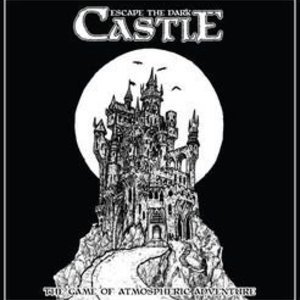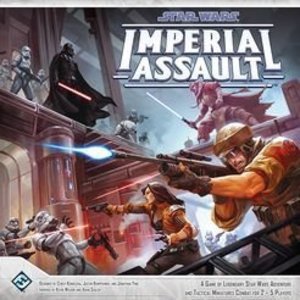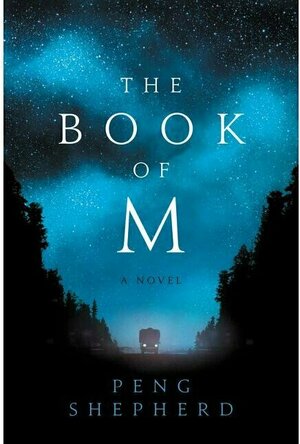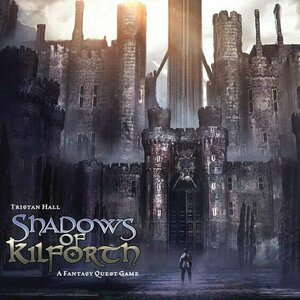Search
Search results
MUMPO (3 KP) rated Escape the Dark Castle in Tabletop Games
Mar 15, 2020
Games are very quick ~30mins (5 more)
Easy to learn in about 10 mins
Portable game
Alot of replayability
Easy to set up to get straight into the action
Quality components with thick card and nice feeling dice
A great introduction to RPG style tabletop gaming.
Entertainment Editor (1988 KP) rated Star Wars: Imperial Assault in Tabletop Games
Mar 7, 2018
Star Wars: Imperial Assault: The Kotaku Review
Imperial Assault is a board game that was released in late 2014. I only got around to playing it over the weekend, and I already count those months between as wasted.
Having made a ton of money off their excellent X-Wing game before moving onto capital ship battles, Imperial Assault is Fantasy Flight’s shot at moving Star Wars into more traditional tabletop territory.
If you’ve ever played HeroQuest, Space Crusade or even XCOM, you’ll be familiar with the basics here: players take control of a character and take turns to move about a grid-based battlefield, using terrain as cover as they battle enemies and complete objectives.
It’s designed for 2-5 players, but shines brighter the closer you get to the latter. A single player—basically the dungeon master—takes control of all Imperial forces, while everyone else selects a single Rebel character, choosing from a stable of RPG class stalwarts (support, sniper, etc).
Reviewer: Luke Plunkett
Read the full review here: https://kotaku.com/star-wars-imperial-assault-the-kotaku-review-1734772222
Having made a ton of money off their excellent X-Wing game before moving onto capital ship battles, Imperial Assault is Fantasy Flight’s shot at moving Star Wars into more traditional tabletop territory.
If you’ve ever played HeroQuest, Space Crusade or even XCOM, you’ll be familiar with the basics here: players take control of a character and take turns to move about a grid-based battlefield, using terrain as cover as they battle enemies and complete objectives.
It’s designed for 2-5 players, but shines brighter the closer you get to the latter. A single player—basically the dungeon master—takes control of all Imperial forces, while everyone else selects a single Rebel character, choosing from a stable of RPG class stalwarts (support, sniper, etc).
Reviewer: Luke Plunkett
Read the full review here: https://kotaku.com/star-wars-imperial-assault-the-kotaku-review-1734772222
Goddess in the Stacks (553 KP) rated The Book of M in Books
Sep 7, 2018
What defines a person? Your experiences? Your personality? The emotional bonds you forge? What happens when you forget? Are you still you if you don't remember who that is? The Book of M tackles these questions and takes an intimate look at what happens when some people forget but others remember.
We enter on Max and Ory in an abandoned hotel, running out of food and supplies. Max has lost her shadow, which means she will soon start forgetting. Everything. (There are rumors that Shadowless have died because they forgot to breathe or eat.) We learn it's been a few years since the phenomenon started happening, and flashbacks tell us the story of those early months. Like any good dystopia, it is a world-altering process. Governments are gone because no one remembered to run them. Food and other supplies are dwindling because farmers, shippers, manufacturers forgot what they were doing and how to do it.
But with the forgetting comes - magic, of a sort. Ory comes across a deer in the forest that instead of antlers, has wings sprouting from its forehead. Because someone forgot that deer shouldn't have wings - and so it happened. Forgetting that something can be destroyed can make it indestructible. Forgetting that you left a place can take you back to that place. Forgetting a place exists can make that place no longer exist. It's not a very controllable kind of magic. And it's dangerous - you can never be quite sure what you'll forget, and you can affect other people with it.
And the forgetting starts with losing your shadow. Ory gives Max a tape recorder, so she can record things she might forget. He posts signs around their hideout to remind her of things, like "Let no one in. Ory has a key." and "Don't touch the guns or the knives." But Max knows she is a danger to Ory, and so while she can still remember enough to function, she runs away.
The book mostly concerns Ory and Max's journeys across the country; Max trying to find something she's forgotten, and Ory trying to find Max. The adventure is gripping, heartbreaking, and at times confusing. (Mostly on Max's end, as magic warps things around her.) There are a few side characters who also have viewpoint chapters. Naz Ahmadi is an Iranian girl training for the Olympics in the US - in archery, which comes in quite handy. We also have The One Who Gathers, a mysterious man in New Orleans who has gathered a flock of shadowless.
If you ever played the roleplaying game Mage: the Ascension, and remember the concept of Paradox, this book reminds me of that a lot. (Is it a surprise that I'm a tabletop RPG geek? It shouldn't be. I own almost all of the old World of Darkness books, and currently play in a D&D game, and hopefully soon a second D&D game!) Anyway. Paradox. Where doing magic too far outside the bounds of acceptable reality punishes you, so you have to weigh the potential consequences against the magic you want to do.
I really enjoyed this debut novel; it is a very original take on a dystopia, and raised a lot of questions about personality, memories, and what makes a person the person you remember.
You can find all my reviews at http://goddessinthestacks.com
We enter on Max and Ory in an abandoned hotel, running out of food and supplies. Max has lost her shadow, which means she will soon start forgetting. Everything. (There are rumors that Shadowless have died because they forgot to breathe or eat.) We learn it's been a few years since the phenomenon started happening, and flashbacks tell us the story of those early months. Like any good dystopia, it is a world-altering process. Governments are gone because no one remembered to run them. Food and other supplies are dwindling because farmers, shippers, manufacturers forgot what they were doing and how to do it.
But with the forgetting comes - magic, of a sort. Ory comes across a deer in the forest that instead of antlers, has wings sprouting from its forehead. Because someone forgot that deer shouldn't have wings - and so it happened. Forgetting that something can be destroyed can make it indestructible. Forgetting that you left a place can take you back to that place. Forgetting a place exists can make that place no longer exist. It's not a very controllable kind of magic. And it's dangerous - you can never be quite sure what you'll forget, and you can affect other people with it.
And the forgetting starts with losing your shadow. Ory gives Max a tape recorder, so she can record things she might forget. He posts signs around their hideout to remind her of things, like "Let no one in. Ory has a key." and "Don't touch the guns or the knives." But Max knows she is a danger to Ory, and so while she can still remember enough to function, she runs away.
The book mostly concerns Ory and Max's journeys across the country; Max trying to find something she's forgotten, and Ory trying to find Max. The adventure is gripping, heartbreaking, and at times confusing. (Mostly on Max's end, as magic warps things around her.) There are a few side characters who also have viewpoint chapters. Naz Ahmadi is an Iranian girl training for the Olympics in the US - in archery, which comes in quite handy. We also have The One Who Gathers, a mysterious man in New Orleans who has gathered a flock of shadowless.
If you ever played the roleplaying game Mage: the Ascension, and remember the concept of Paradox, this book reminds me of that a lot. (Is it a surprise that I'm a tabletop RPG geek? It shouldn't be. I own almost all of the old World of Darkness books, and currently play in a D&D game, and hopefully soon a second D&D game!) Anyway. Paradox. Where doing magic too far outside the bounds of acceptable reality punishes you, so you have to weigh the potential consequences against the magic you want to do.
I really enjoyed this debut novel; it is a very original take on a dystopia, and raised a lot of questions about personality, memories, and what makes a person the person you remember.
You can find all my reviews at http://goddessinthestacks.com
Purple Phoenix Games (2266 KP) rated Shadows of Kilforth: A Fantasy Quest Game in Tabletop Games
Sep 3, 2020
Have you ever sat down to read a rulebook and had to split it up into several reading sessions? I have multiple times. This happened just recently when I sat down to learn Shadows of Kilforth. Granted, I have two kids that take up the majority of my time and they provide plenty of adorable distraction, but even still, this absolute unit of a rulebook took me a good few days to actually finish. Was the time and effort worth it in the end? Yes. Absolutely. Keep reading.
Shadows of Kilforth is subtitled, “A Fantasy Quest Game.” Right there in the title you find out exactly what you are up against in the very foreboding but unassumingly-sized box. A game set in a fantasy world that is focused on questing. I have to admit up front that this review will be treated a little differently as the rulebook is hefty and nobody wants to read a thorough rules essay on Shadows. So I will give you a very high-level overview of the main steps and then give you my thoughts on how it all works together.
DISCLAIMER: We were provided a copy of this game for the purposes of this review. This is a retail copy of the game, so what you see in these photos is exactly what would be received in your box. I do not intend to cover every single rule included in the rulebook, but will describe the overall game flow and major rule set so that our readers may get a sense of how the game plays. For more in depth rules, you may purchase a copy online or from your FLGS. -T
Shadows of Kilforth is essentially a card and dice RPG-esque adventure game with an Asian-style theme but set in a fantasy world where locations will be devastated into gloom (building upon the first in the series Gloom of Kilforth). The players, as the heroes, have the daunting task of journeying throughout Kilforth’s 25 locations to collect items, allies, spells, and titles to overcome main quests and subquests before every location falls into gloom. These quests usually have the players gathering specific card types to satisfy and complete. Once main player storyline quests, called Sagas, are completed the hero levels up and when they complete their fourth quest in their main Saga they may attempt their Finale and then may finally assault the big boss, the Ancient.
Each turn players have Action Points (AP) to spend on doing different actions: movement, discovering rumours (yes, I know it’s the Queen’s English), confrontations, and regaling a Saga chapter, among several others. Some actions are free actions, called Deeds. These include resolving loot tokens, assaulting an ancient, exchanging items between players, and several others. By using combinations of Actions and Deeds players will be able to travel around collecting those items, allies, and so forth needed to complete their Saga chapters.
To complete objectives and quests, players will typically be rolling dice to meet requirements on the cards. This, as all role-players know, can be either supremely lucky or incredibly and predictably debilitating. Skill checks are abundant in Shadows and diversifying characters may or may not have advantages by being able to complete Fight, Study, Sneak, and Influence tests. Players will win if they can complete their Sagas and defeat the Ancient before all of the locations fall into gloom, signaling the end of the game.
All this, again, is very high-level and there are many intricacies in Shadows that I just cannot go over for the sake of time and the health of my typing fingers. But, the game can be played solo, cooperatively, or competitively. So depending on the mode of play and number of players Shadows can range from a 45 minute foray to multi-hour epics. This is why I have played this solo with one character for my plays.
Components. Shadows of Kilforth is very card-heavy, but also includes other goodies. The cards themselves are firstly quite numerous, but also good quality. I can see myself sleeving this and loving every minute of that process. Aside from the cards, the game includes standees for player pieces on the card map, wooden components to track HP, AP, Fate, Obstacles, Gold, Hidden characters, great swirly 6d6, and also cardboard chits for Loot tokens. I haven’t even mentioned the art yet and that may be the most stunning component in this game! I LOVE a game with great art, and Shadows has simply amazing art. This is not usually my style of game art either, but it is so pleasing and everything makes sense and gets me immersed in the game. Everything provided is wonderful quality and an absolute joy to use during play.
Ok so like always, we place our ratings graphic right at the top of our posts so our readers can see right away what we think of the game. As you can tell, I love Shadows of Kilforth. It has essences of so many games I enjoy pieced together in a very attractive and captivating package. The movement and subsequent destruction of map-cards are reminiscent of Forbidden Island/Desert and Tiny Epic Defenders, which I really love (don’t hate – it’s a good game). The gathering of select card types and returning to a location to complete feels like fetch quests in MMORPGs (Final Fantasy XI being my main squeeze for many years). Obviously dice skill checks and level ups from tabletop RPGs are in there as well.
Shadows is just such a great collection of mechanics that I love that I can see myself playing this game over and over and over. Caveat: I will never play this any way other than absolutely solo. My first play, yes a learning session, was just shy of two hours from setup to tear-down. Adding players will increase game length, and playing with AP-prone friends is a no-go for me on Shadows; I had to reference both the excellent provided cheat sheet and the rulebook throughout the play but I eventually got the hang of it and was able to fly through. I may play this solo but with multiple characters cooperatively someday, but I do not wish to play this with other people. Ever.
So here’s my final thought. Shadow of Kilforth is a beefy game, but is well worth the time and effort to learn and play a couple times before passing judgment. It has everything I love in a game and I can’t stop thinking about it. I want to play all the different Race/Class combinations and just dunk on all the Ancients. If only my dice didn’t hate me so much. I will certainly be keeping this one forever, and if you are a fan of fantasy themed adventure card games with heavy use of dice and cool components, DEFINITELY take a look at Shadows of Kilforth. As I am the only one who has played this, I speak for the team in saying Purple Phoenix Games gives this one a 6 / 6. Treat yoself to this one, folks.
Shadows of Kilforth is subtitled, “A Fantasy Quest Game.” Right there in the title you find out exactly what you are up against in the very foreboding but unassumingly-sized box. A game set in a fantasy world that is focused on questing. I have to admit up front that this review will be treated a little differently as the rulebook is hefty and nobody wants to read a thorough rules essay on Shadows. So I will give you a very high-level overview of the main steps and then give you my thoughts on how it all works together.
DISCLAIMER: We were provided a copy of this game for the purposes of this review. This is a retail copy of the game, so what you see in these photos is exactly what would be received in your box. I do not intend to cover every single rule included in the rulebook, but will describe the overall game flow and major rule set so that our readers may get a sense of how the game plays. For more in depth rules, you may purchase a copy online or from your FLGS. -T
Shadows of Kilforth is essentially a card and dice RPG-esque adventure game with an Asian-style theme but set in a fantasy world where locations will be devastated into gloom (building upon the first in the series Gloom of Kilforth). The players, as the heroes, have the daunting task of journeying throughout Kilforth’s 25 locations to collect items, allies, spells, and titles to overcome main quests and subquests before every location falls into gloom. These quests usually have the players gathering specific card types to satisfy and complete. Once main player storyline quests, called Sagas, are completed the hero levels up and when they complete their fourth quest in their main Saga they may attempt their Finale and then may finally assault the big boss, the Ancient.
Each turn players have Action Points (AP) to spend on doing different actions: movement, discovering rumours (yes, I know it’s the Queen’s English), confrontations, and regaling a Saga chapter, among several others. Some actions are free actions, called Deeds. These include resolving loot tokens, assaulting an ancient, exchanging items between players, and several others. By using combinations of Actions and Deeds players will be able to travel around collecting those items, allies, and so forth needed to complete their Saga chapters.
To complete objectives and quests, players will typically be rolling dice to meet requirements on the cards. This, as all role-players know, can be either supremely lucky or incredibly and predictably debilitating. Skill checks are abundant in Shadows and diversifying characters may or may not have advantages by being able to complete Fight, Study, Sneak, and Influence tests. Players will win if they can complete their Sagas and defeat the Ancient before all of the locations fall into gloom, signaling the end of the game.
All this, again, is very high-level and there are many intricacies in Shadows that I just cannot go over for the sake of time and the health of my typing fingers. But, the game can be played solo, cooperatively, or competitively. So depending on the mode of play and number of players Shadows can range from a 45 minute foray to multi-hour epics. This is why I have played this solo with one character for my plays.
Components. Shadows of Kilforth is very card-heavy, but also includes other goodies. The cards themselves are firstly quite numerous, but also good quality. I can see myself sleeving this and loving every minute of that process. Aside from the cards, the game includes standees for player pieces on the card map, wooden components to track HP, AP, Fate, Obstacles, Gold, Hidden characters, great swirly 6d6, and also cardboard chits for Loot tokens. I haven’t even mentioned the art yet and that may be the most stunning component in this game! I LOVE a game with great art, and Shadows has simply amazing art. This is not usually my style of game art either, but it is so pleasing and everything makes sense and gets me immersed in the game. Everything provided is wonderful quality and an absolute joy to use during play.
Ok so like always, we place our ratings graphic right at the top of our posts so our readers can see right away what we think of the game. As you can tell, I love Shadows of Kilforth. It has essences of so many games I enjoy pieced together in a very attractive and captivating package. The movement and subsequent destruction of map-cards are reminiscent of Forbidden Island/Desert and Tiny Epic Defenders, which I really love (don’t hate – it’s a good game). The gathering of select card types and returning to a location to complete feels like fetch quests in MMORPGs (Final Fantasy XI being my main squeeze for many years). Obviously dice skill checks and level ups from tabletop RPGs are in there as well.
Shadows is just such a great collection of mechanics that I love that I can see myself playing this game over and over and over. Caveat: I will never play this any way other than absolutely solo. My first play, yes a learning session, was just shy of two hours from setup to tear-down. Adding players will increase game length, and playing with AP-prone friends is a no-go for me on Shadows; I had to reference both the excellent provided cheat sheet and the rulebook throughout the play but I eventually got the hang of it and was able to fly through. I may play this solo but with multiple characters cooperatively someday, but I do not wish to play this with other people. Ever.
So here’s my final thought. Shadow of Kilforth is a beefy game, but is well worth the time and effort to learn and play a couple times before passing judgment. It has everything I love in a game and I can’t stop thinking about it. I want to play all the different Race/Class combinations and just dunk on all the Ancients. If only my dice didn’t hate me so much. I will certainly be keeping this one forever, and if you are a fan of fantasy themed adventure card games with heavy use of dice and cool components, DEFINITELY take a look at Shadows of Kilforth. As I am the only one who has played this, I speak for the team in saying Purple Phoenix Games gives this one a 6 / 6. Treat yoself to this one, folks.



